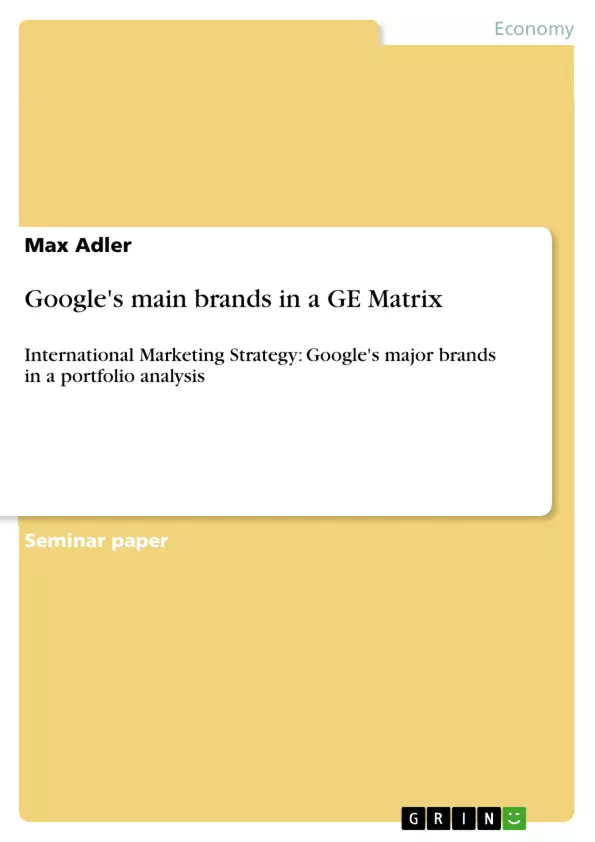According to the list FT Global 500 from the Financial Times, Google is worldwide on position 39 from the companies listed in the stock exchange (Financial Times, 2009). Google was founded in 1998 by the software engineers Larry Page and Sergei Brin. Nowadays, only 12 years later, it has grown to one of the greatest international companies which has a huge influence on the daily life in industrial nations. Furthermore with 66 billion US-Dollars Google is the most valuable brand in the world. They started with a search engine which has pushed the former competition like AltaVista out of business.
Google Inc. had in 2008 a turnover of almost 22 billion US-Dollars and it is still growing (Google, 2010). At the beginning they had a positive press but nowadays there are more and more critical voices because of their high market share in the search engine sector of almost 90%. Critics say that Google has too much influence and it is possible that they manipulate data. Google has many current projects where people fear a lack of their own data protection (The Register, 2009; BBC, 2007a). But Google does not have such a success because of a disregard of data protection, they are just more innovative than the competition. They reinvest the benefit they make in innovation and design new products or integrate other innovative companies in their own portfolio. Most of their projects are projects which the world has never seen before (Chaffey et al., 2009, p.3).
This piece of work organizes Google’s major brands in a GE-Matrix in order to identify the strengths and weaknesses of them. Furthermore the products are evaluated to prognosticate their future in this company. Finally there is a short outline about the sense and the value of these portfolio models in the 21 century.
Table of Contents
- Introduction
- Google's major brands
- Search engine
- YouTube
- Chrome Browser
- Maps, Earth and Street View
- AdWords and AdSense
- Other Google brands
- Portfolio analysis via matrices in the 21st century
- Why portfolio analysis?
- Portfolio analysis and Google
- Companies like Google
- Conclusion
Objectives and Key Themes
This work aims to analyze Google's major brands through the lens of a GE Matrix to identify their strengths and weaknesses. The analysis will also assess the future prospects of these products within the company's portfolio. Finally, the paper provides a brief overview of the significance and value of portfolio models in the 21st century.
- Google's brand portfolio
- Portfolio analysis using the GE Matrix
- Strategic analysis of Google's major brands
- The future of Google's brands
- The value of portfolio models in the 21st century
Chapter Summaries
The introduction provides a background on Google's rise to prominence, emphasizing its global influence and market dominance. The paper highlights the critical acclaim Google received initially and the growing concerns about data privacy and market manipulation. It emphasizes Google's strategic focus on innovation and reinvention, constantly incorporating new products and integrating innovative companies into its portfolio.
The second chapter examines Google's major brands, focusing on the search engine, YouTube, Chrome Browser, Maps, Earth and Street View, AdWords and AdSense, and other notable brands. It explores the market share, competitiveness, and future prospects of each brand within the company's portfolio. The chapter also discusses the challenges and opportunities associated with managing these brands, including copyright issues and the increasing competition in the digital landscape.
Keywords
Google, brand portfolio, GE Matrix, portfolio analysis, search engine, YouTube, Chrome Browser, Maps, Earth, Street View, AdWords, AdSense, digital marketing, innovation, competition, market share, data privacy, copyright law, strategic analysis, 21st century.
- Citar trabajo
- Max Adler (Autor), 2010, Google's main brands in a GE Matrix, Múnich, GRIN Verlag, https://www.grin.com/document/150710



